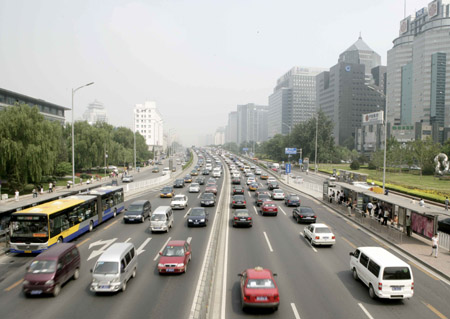4 day traffic ban cuts pollutant discharge by 5,800 tons
Updated: 2007-09-30 09:12
BEIJING - During the four-day test period ahead of next August's Olympic Games in Beijing last month, the amount of pollutants discharged was cut by 5815.2 tons, according to a report released by Beijing Environmental Protection Bureau on Saturday.
 Vehicles pass a main thoroughfare in Beijing during the first day of a four-day air quality experiment for the Olympics, August 17, 2007. [Xinhua] |
The atmospheric pollution in Beijing is caused by a combination of sulfur dioxide, nitrogen dioxide, carbon monoxide and particulate matter, which largely came from exhaust emissions.
From August 17 to 20, about 1.3 million cars were barred from the city roads each day to test the effect on air quality for the Olympic Games.
Drivers with even-numbered and odd-numbered license plates, excluding taxis, buses and emergency vehicles, were told to stay off the roads on alternate dates or face fines.
During the test, the emissions of nitrogen oxides, carbon monoxide and inhalant particulate matter (IPM), a major air pollutant, were cut by 87 tons, 1,362 tons and 4.8 tons respectively on each of the four days.
The report says the air quality was apparently improved in Beijing based on monitoring on air quality carried out by China National Environmental Monitoring Center, Chinese Academy of Meteorological Sciences and Chinese Academy of Environmental Sciences.
The densities of nitrogen oxides, carbon monoxide and inhalant particulate matter were reduced by 15 percent to 20 percent on average, compared with the pertaining data on August 16, the day before the ban was enforced.
The nitrogen dioxide column density also dropped by 17 percent to 29 percent in Beijing on each of the four days, compared with that on August 16.
Related Stories: Beijingers endorse traffic controls
|
|
|
||
|
||
|
|
|
|